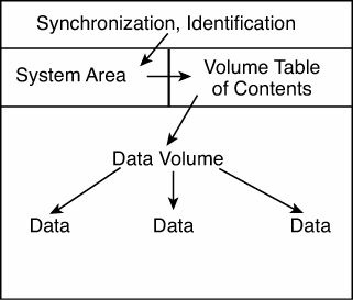Hardware Reference
In-Depth Information
command at a command prompt. To create these alias names, Windows truncates the name to six (or
fewer) characters followed by a tilde (~) and a number starting with 1 and truncates the extension to
three characters. Other numbers are used in the first part if other files that would have the same alias
when truncated already exist. For example, the filename This is a.test gets THISIS~1.TES as an alias.
This filename alias creation is independent of your CD drive, but it is important to know that if you
create or write to a CD using the ISO 9660 format using Level 1 restrictions, the alias short names are
used when files are recorded to the disc, meaning any long filenames will be lost in the process. In
fact, even the alias short name will be modified because ISO 9660 Level 1 restrictions don't allow a
tilde—that character is converted to an underscore in the names written to the CD.
The ISO 9660 data starts at 2 seconds and 16 sectors into the disc, which is also known as logical
sector 16 of track one. For a multisession disc, the ISO 9660 data is present in the first data track of
each session. This data identifies the location of the volume area—where the actual data is stored.
The system area also lists the directories in this volume as the volume table of contents (VTOC), with
pointers or addresses to various named areas, as illustrated in
Figure 11.17
. A significant difference
between the CD directory structure and that of a normal hard disk is that the CD's system area also
contains direct addresses of the files within the subdirectories, allowing the CD to seek specific
sector locations on the spiral data track. Because the CD data is all on one long spiral track, when
speaking of tracks in the context of a CD, we're actually talking about sectors or segments of data
along that spiral.
Figure 11.17. Basic ISO 9660 file organizational format.
To put the ISO 9660 format in perspective, the disc layout is roughly analogous to that of a floppy
disk. A floppy disk has a system track that not only identifies itself as a floppy disk and reveals its
density and OS, but tells the computer how it's organized (into directories, which are made up of
files).
Joliet
Joliet is an extension of the ISO 9660 standard that Microsoft developed for use with Windows 95
and later. Joliet enables CDs to be recorded using filenames up to 64 characters long, including
spaces and other characters from the Unicode international character set. Joliet also preserves an 8.3
alias for those programs that can't use the longer filenames.
In general, Joliet features the following specifications:


